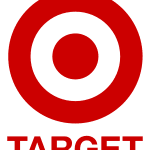This article was written by Jean Dion.
If there’s one sentence that keeps marketing experts up at night, it’s this one: “We need to work on a rebranding strategy.” There’s a lot of money on the line when companies tinker with their public image. And failure? That sort of thing is public, and it could lead to years and years of financial difficulties. It’s enough to make anyone worry.
But thankfully, there are a number of companies that seem to have this whole rebranding process down pat. Reading up on their work could give you the inspiration you need to lead your company into a brave new world.
Lessons From Successful Rebranding Efforts
Our winner’s circle is pulled from a variety of different industries. Here they are, in no particular order.
Pabst Blue Ribbon’s Cagey Rebranding Strategy
At one time, Pabst Blue Ribbon (PBR) was synonymous with beer that was made in America, for people who worked hard. All of those attributes appear in this vintage ad:
Cut to 2001, when sales dipped beneath a million barrels for the very first time. Palettes changed, and drinkers began to favor darker beers. In addition, the company moved brewing operations out of Milwaukee, and some consumers were up in arms about that. The brand just seemed to slip into obscurity, and executives took no steps to combat that slide with ad buys or promotions.
But execs used that to their advantage in the early 2000s, rebranding the company as a small, upstart venture that sold good beer and supported hipster culture. A word-of-mouth campaign that started in Portland, Oregon, soon spread. PBR bought ad space in alternative magazines, and they began to support outdoor sports events that were popular among snowboarders, cyclists, and other hip elites.
Without even tinkering with the logo or amending the color palette, everything changed for PBR. Sales jumped by 25 percent in 2009 alone, and 2012, Americans were drinking 92 million gallons of PBR each year.
Rebranding a Company: Target Hit the Bullseye

In the 1990s, Target was just one of many discount retailers that sold so-so products for a low price. This was the place shoppers would go when they weren’t concerned with pesky details like brand names or quality. Price was king.
It’s hard to compete on price alone, and after years of losing the battle to retailers like K-Mart, Target took things in a different direction. In 2011, Target began selling clothes designed by Missoni exclusively for Target.
The response was amazing. Stores sold out by 9am on the day the collection became available. Target continued to build on that success by developing new partnerships, and ads hammered home the message by listing the designers by name.
Now, Target is worth an estimated $64.948 billion, which makes it second only to Wal-Mart, in terms of sheer size. Meanwhile, one of Target’s main competitors, K-Mart, recently emerged from bankruptcy. Clearly, the company that rebranded is the company that succeeded.
And although Target’s recent mishap damaged its reputation, it’s likely that the brand will bounce back from this one if they employ a branding strategy that speaks to consumers–and rebuilds their trust.
Holiday Inn’s Decades-long Rebranding Process

Between the 1950s and 1970s, Holiday Inn lured weary travelers with the “great sign” that incorporated an arrow, a star and a lot of neon. Following that beacon meant heading to a hotel that was clean, relatively uniform and somewhat inexpensive.
The signs began to fade away in the 1980s, but some remained in lone hotels across the nation. And that was part of a bigger problem. When execs sat down to rebrand in 2007, they realized that many Holiday Inn hotels were really different from one another. Some were clean. Some were not. Some were inexpensive. Some were not. Even though the hotel was built on a foundation of consistency, there was little overlap from one facility to another. Executives approved a $1 billion rebranding program, hoping to turn things around.
Key aspects of the hotels would be uniform, including the layout of the furniture and the amenities provided. Low-performing hotels were shut down. And staff was trained to focus on customers, so there would be no social embarrassments. A multi-million dollar ad buy helped to promote the changes.
Prior to the rebrand, Holiday Inn ranked sixth, in terms of customer satisfaction. Now, they beat the competition. In fact, they get top scores from J.D. Power and Associates for the service they provide. And occupancy rates are on the rise, officials say.
How to Emulate These Successful Rebranding Efforts
All of these companies had very different challenges to overcome, and they all used radical approaches to get the work done. But there are some themes that carry over from company to company and success story to success story.
For example, each successful rebranding strategy shown here involved a significant amount of research. Before the first sketch was drawn or the first check was signed, companies attempted to determine:
- Their key products
- Their share of the market
- Their goals for the future
That approach is pretty textbook. In fact, “figure out who you are and then promote it” could be a rebranding definition. But that’s the sort of work that’s hard to do in a conference room. Getting to know your company on a granular level means asking consumers how they feel, and understanding what they want.
That means using branding survey questions and example brand survey templates. A well-crafted set of questions could give you the data you need to push your company in the right direction.
But, to do the work right, you’ll also need to step away from your loyal client base. Why? Because if you’re only working with the people who know you right now, you’re missing out on input from consumers who aren’t choosing your company. They could have the keys that could help you to improve.
If you have no idea how to find customers who aren’t already in touch and in tune with your brand, SurveyMonkey Audience can connect you with more than 3 million people who are ready to take your brand awareness or brand loyalty surveys. That could make rebranding your company really easy.
And if you’d just like to know more about branding in general, we’ve compiled all of the tips you’ll need to handle rebranding an organization like a pro.




